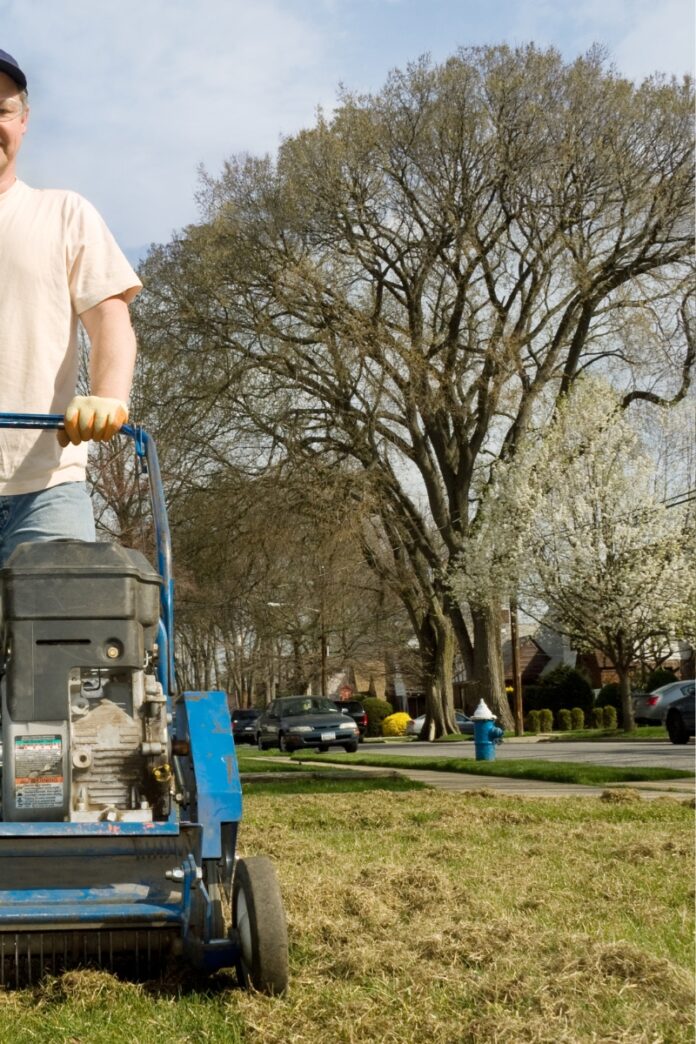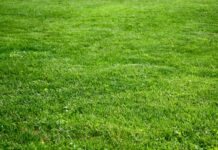Maintaining a lush, healthy lawn requires more than just regular mowing and watering. Thatch and moss buildup can hinder grass growth and detract from the appearance of your lawn. In this article, we’ll explore effective strategies for managing lawn thatch and moss to promote a vibrant, green lawn.
Understanding lawn thatch and moss: Thatch is a layer of dead grass, roots, and organic matter that accumulates between the soil and the actively growing grass blades. While a thin layer of thatch is beneficial for moisture retention and soil insulation, excessive thatch can prevent air, water, and nutrients from reaching the grass roots, leading to weak, sparse turf.
Moss, on the other hand, thrives in damp, shaded areas with poor drainage. It competes with grass for space and nutrients, resulting in patches of dense, spongy growth that can choke out the grass.
Effective management strategies:
- Dethatching: Use a dethatching rake or machine to remove excessive thatch buildup. This process helps aerate the soil and encourages healthy root growth. Dethatching is typically done in the spring or fall when the grass is actively growing.
- Aeration: Aerating the lawn involves perforating the soil with small holes to improve air, water, and nutrient penetration. This reduces compaction and promotes root development. Aeration can be done using a manual or mechanical aerator.
- Mowing practices: Avoid mowing the grass too short, as this can stress the turf and encourage thatch accumulation. Instead, maintain a moderate mowing height and alternate the direction of mowing to prevent grass compaction.
- Overseeding: Introduce new grass seed to thicken the turf and outcompete moss. Choose grass varieties that are well-suited to your climate and soil conditions for optimal results.
- Improving drainage: Address areas of poor drainage by adding topsoil, grading the lawn surface, or installing drainage systems. Moss thrives in damp, shaded environments, so improving drainage can help discourage its growth.
- Sunlight and pruning: Trim overhanging branches and thin out dense vegetation to increase sunlight penetration and airflow to the lawn. This reduces shade and creates less favorable conditions for moss growth.
- Chemical treatments: In severe cases of moss infestation, chemical treatments such as moss killers or herbicides may be necessary. Follow product instructions carefully and consider environmental impact when using chemicals.
DIY or Call for Help:
- DIY: Dethatching, aerating, mowing, overseeding, and improving drainage are tasks that many homeowners can tackle themselves with the right tools and techniques. These methods are generally safe and straightforward for DIY enthusiasts.
- Call for Help: If moss infestation is severe or if chemical treatments are required, consider consulting with a lawn care professional. They can provide expert advice and ensure treatments are applied safely and effectively.
Conclusion: Effectively managing lawn thatch and moss is essential for maintaining a healthy, vibrant lawn. By understanding the causes of thatch and moss buildup and implementing proper management strategies such as dethatching, aerating, and improving drainage, you can promote lush, green turf that enhances the beauty of your outdoor space. Whether you choose to tackle these tasks yourself or seek professional assistance, prioritize proactive lawn care to achieve long-term success.







